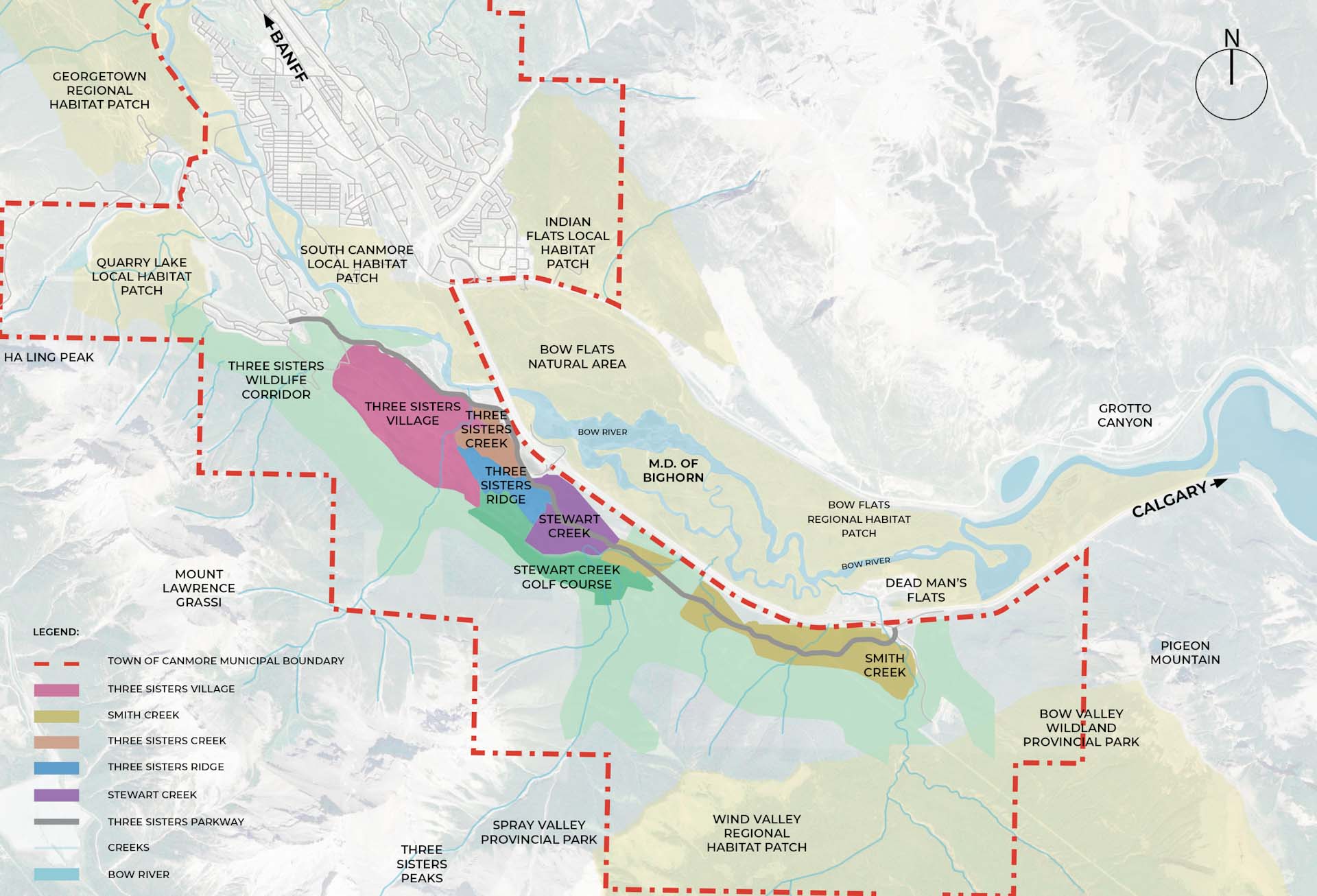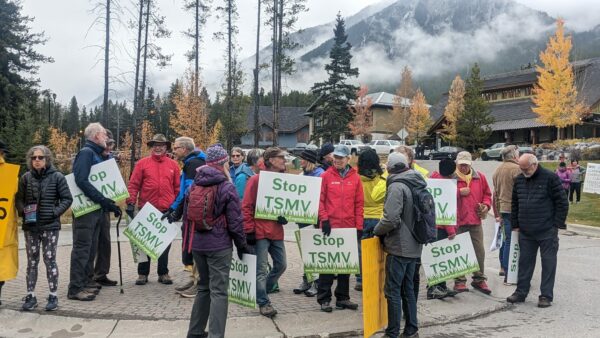A 30-year-old fight in Canmore development has finally ended, leaving the community polarized.
Following a decision by the Court of Appeal, which mandated the Council to accept the Land and Property Rights Tribunal’s (LPRT) decision to approve the huge development, the Canmore Council reluctantly gave thumbs up to Three Sisters Mountain Village Properties Limited (TSMVPL) plans for Three Sisters Village and Smith Creek.
This came after the Court of Appeal dismissed Canmore’s legal arguments against the LPRT decisions.
A Battle Lost
The town of Canmore had pushed back against large development plans for the area since 1992 when the Natural Resources Conservation Board approved development that would encompass 80% of available land in Canmore.
The big plan was to build golf courses, hotels, neighbourhoods and commercial properties with the caveat that there were ‘adequate’ wildlife corridors.
These development plans, which have changed and evolved and ebbed and flowed, left a long legacy of political and legal battles polarizing the town for decades.
Many people in Canmore are angry that a 30-year-old decision and a provincial tribunal trumped local decision-making, leading to the Council’s recent ‘forced’ approval.
Canmore Mayor Sean Krausert highlighted that the lands were annexed for future development and that the municipality must follow provincial legislation.
Krausert told the Rocky Mountain Outlook, “You may not like it that we don’t have discretion on absolutely everything, but those are the rules put in place by the provincial government, and we are created by the provincial government. The municipality must follow the rules set down by the democratically elected provincial government.”
Financially, a $161 million lawsuit against the Town by TSMVPL remains, with Thunderstone Quarries also having a $63.5 million lawsuit against the town due to its land ownership in Smith Creek.


The Death of a Wildlife Corridor?
The Three Sisters and Smith Creek Area Structure Plans (ASP) have been a focal point of concern for conservationists for years, as they believe it threatens the last remaining wildlife corridor connecting Banff National Park and Kananaskis Country.
This corridor is vital for wolves, elk, grizzly bears and other wildlife.
And now many people in Canmore who were concerned about the planned developments have had their hopes dashed for adequate protection of the corridor.
Twenty-five years ago, Canmore wildlife biologist Karsten Heuer undertook a journey from Yellowstone National Park to Watson Lake in the Yukon to assess the feasibility of a connected continental corridor called Yellowstone to Yukon.


He found that while there was almost continuous wilderness supporting wildlife along the Rockies, areas like the Bow Valley around Canmore were becoming increasingly developed.
Heuer emphasized the importance of viewing national parks as connected networks for species to thrive in the long run.
Now, because Canmore lost the legal battle over the Three Sisters Village and Smith Creek developments, we will likely see its population double in the next two decades. Heuer believes it will have a long-lasting impact on wildlife corridors.
Heuer has observed the gradual degradation of the wildlife corridor due to previous developments like Eagle Terrace and Silvertip.
A study published in Movement Ecology revealed that large carnivores, such as grizzly bears and wolves, tend to avoid areas with high human activity.
The study looked at GPS data from 2002 to 2020 and found that development had a harmful effect on how much land carnivores could use and how they moved around.
Mark Hebblewhite, one of the people who worked on the study, said that if the Three Sisters projects go ahead, it would make the Bow Valley’s environment worse.
Balancing Development and Conservation?
Chris Ollenberger, director of strategy and development for the company, believes the wildlife corridor will remain functional despite the developments.
He argues that the current challenges to the corridor come from unregulated human activity within it. As part of the development plans, measures such as wildlife fences and designated trails are proposed to manage human and wildlife interactions.
According to the company’s website, it “has set aside more than 60% of their privately-owned land totalling 1,500 acres, to be dedicated to improving connectivity for elk, deer, cougars, wolves and bears.”
The Natural Resources Conservation Board has approved the company’s wildlife corridor proposals.
However, conservationists like Hilary Young, Y2Y’s Director of Communities and Conservation, and Heuer remain skeptical.
They believe the proposed corridor is too narrow and steep to be effective for wildlife movement. Young also expressed concerns about the effectiveness of the proposed wildlife fence, calling it a “giant experiment.”
While developers believe they can balance human expansion with wildlife conservation, many residents are deeply concerned about the potential long-term impacts on the region’s wildlife.
With Canmore officially approving the development plans, the future of the wildlife corridor remains in the hands of planners, with the focus shifting to balancing development and ensuring the best possible outcomes for wildlife.








